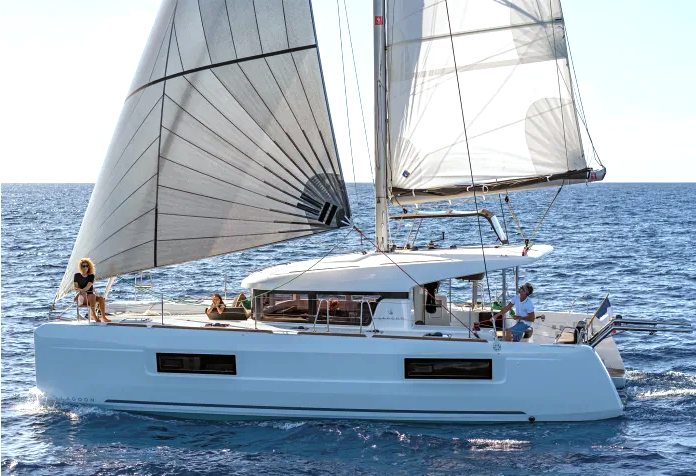
The Humble Albin Vega 27 Has a Storied History
We recently spotted an Albin Vega 27 in our Classy Classifieds, reminding us of the many great adventures people have taken on what may now look like a relatively nondescript 27-ft sloop. But never underestimate what small boats with adventurous skippers can do. We first remember the Vega 27 as the boat that 22-year-old John Neal of Mahina Expeditions sailed for a 15,000-mile circumnavigation of the Pacific in 1974 — the same year the boat in our classifieds was built. John chronicled his adventures in the Log of the Mahina, and since then has gone on to sail another 400,000 miles.
Almost 40 years later, Matt Rutherford, at about age 31, did a solo circumnavigation of the Americas starting in the Chesapeake on a 1969 Vega 27. It was an epic 27,000-mile, 309-day solo circumnavigation, taking him over the Americas via the Northwest Passage and south from Alaska past San Francisco and around Cape Horn before returning to Chesapeake Bay. Yes, all that on a sister ship to the boat pictured below. Matt also has gone on to sail many thousands of miles and continues to sail to protect the oceans with his Ocean Research Project.
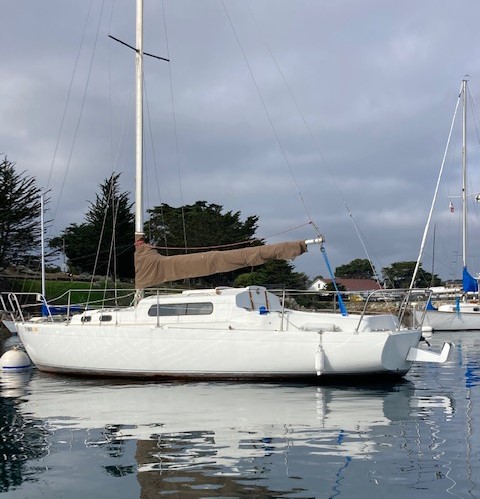
If you’ve been around sailing for a while we suspect you remember these very popular cruisers built in Sweden from the late ’60s until 1979, when the final, 3,450th boat was built. Most former Vega owners recognize the boat anywhere, even while passing one parked by a tree in a front yard on the highway, while traveling at 70 mph. This actually was the case when one of our editors was heading to Tahoe for a weekend.
“There we were, cruising along, singing out loud in (or out of) tune with the radio when all of a sudden Jay slams on the brakes while gibbering on about something random. He had seen an Albin Vega on the roadside, with a For Sale sign attached. What else would a supportive spouse do but say, ‘Go back; take a look?'”
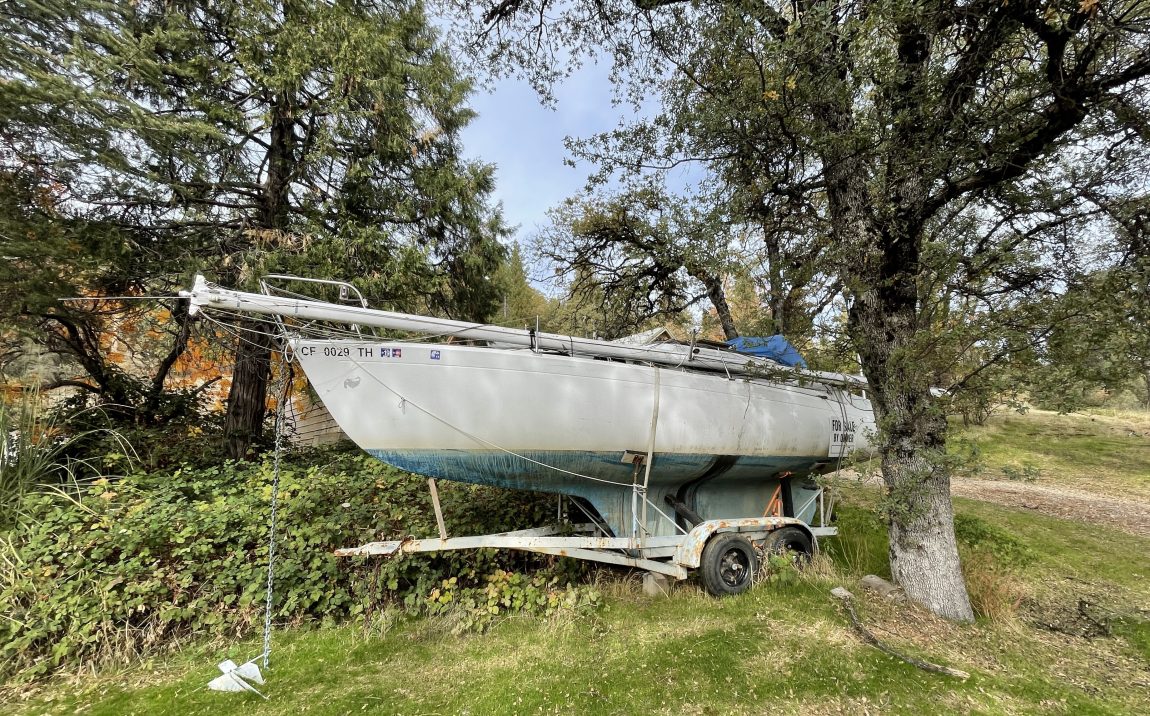
“With quickened pulses, we both scanned the highway in each direction, hoping our car’s turning circle was small enough for a quick whip around before the next truck or SUV came lumbering around the not-distant-enough bend. Thankfully we survived the U-turn and pulled up in a stranger’s driveway. ‘We sailed around Greece on one of these,’ he said. ‘My mom, my dad, my brother and I.’
“The boys were around 10 and 13 years old, and the memories of that extended sailing voyage have stayed with them. Whenever there is a photo, or even a mention of a Vega, my husband’s eyes light up and he investigates its history. ‘Each Vega had its own sail number, and my brother and I have been trying to remember ours,’ he added.”
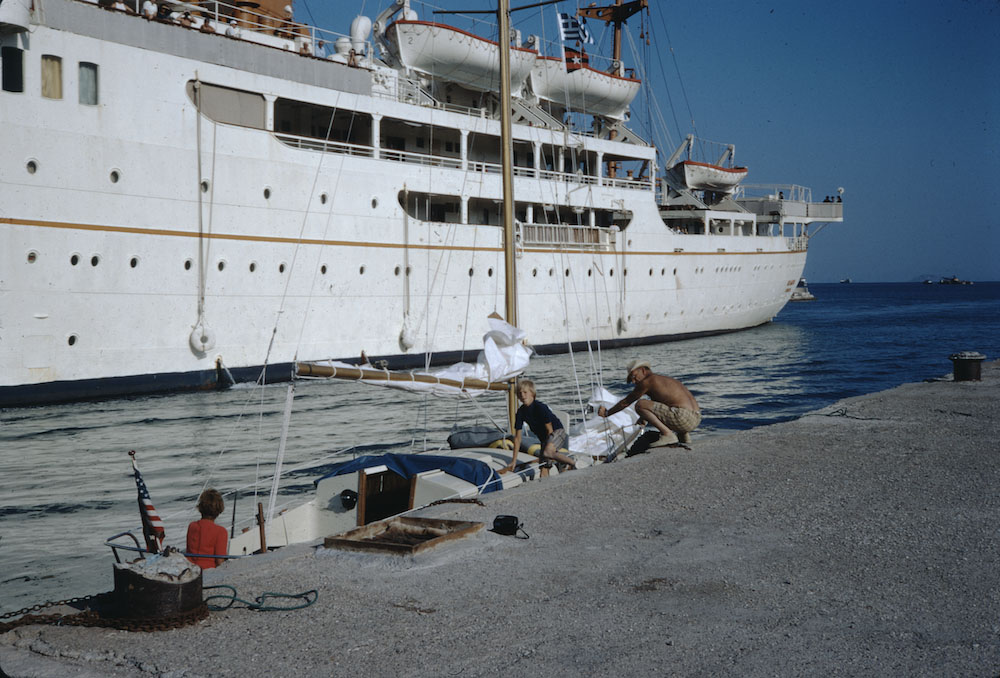
“The boat we saw on the roadside had clearly been out of the water for some time, and was in need of TLC, but nonetheless, it was a nostalgic moment. ‘So, do you want to call the phone number and ask about it?’ I said. ‘No,’ Jay replied quietly, ‘I just wanted to look.’
“I expect he spent the remainder of the drive up the mountain reliving those carefree days aboard Dawn Treader.”
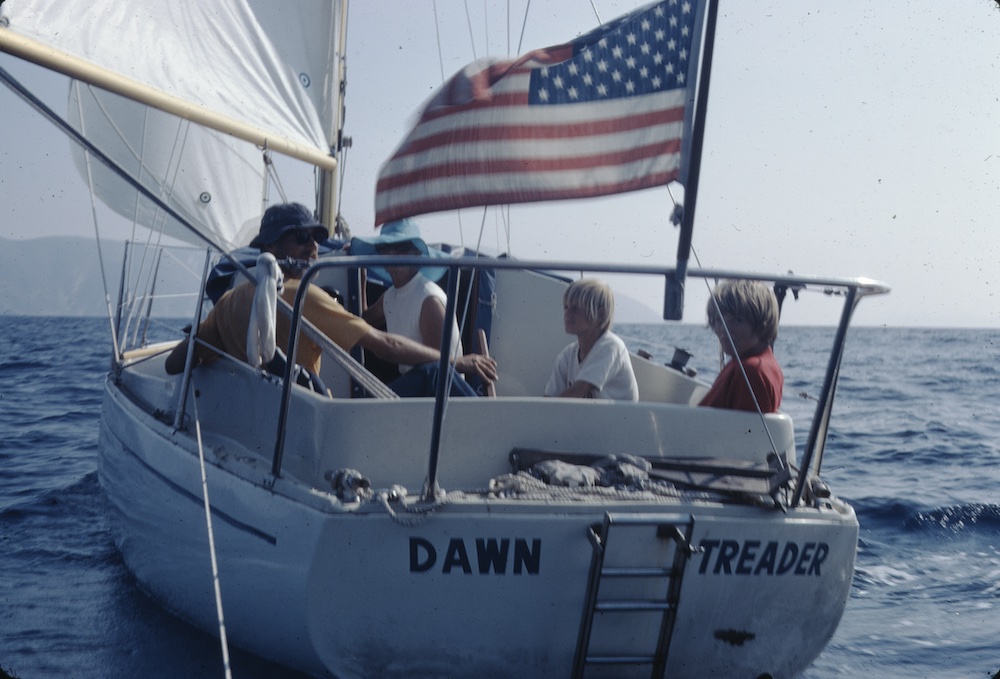
We’re not suggesting you buy a Vega to do a circumnavigation of the Pacific or of the Americas — that kind of heritage could be a little intimidating. Though it’s also reassuring. However, if you’re looking for a capable boat at a reasonable price to circumnavigate Angel Island, or Decker Island in the Delta, this boat might make sense. One of the great aspects of browsing the Classifieds is the hidden pedigree and history of some boats that might escape the casual glance.
New Blackaller Buoy Ready for Action
Early on Tuesday morning, Ron Young texted Latitude to alert us to the placing of the new Blackaller buoy in its spot east of the South Tower of the Golden Gate Bridge. “Scott Easom just called to say that the guy with the big government boat needed to place the buoy can only be at StFYC today at 10:30 a.m.,” wrote Ron.
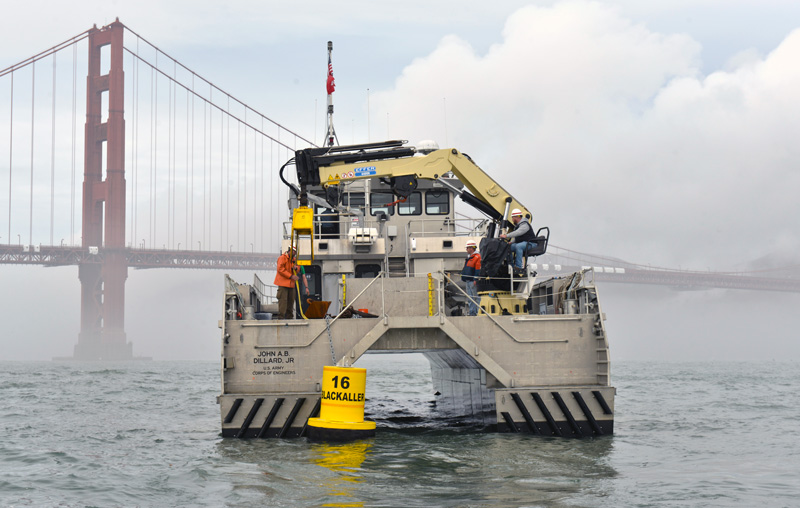
So the new, larger YRA Mark #16 is now on station and should be much more visible to racers approaching it from down the Cityfront or across San Francisco Bay.
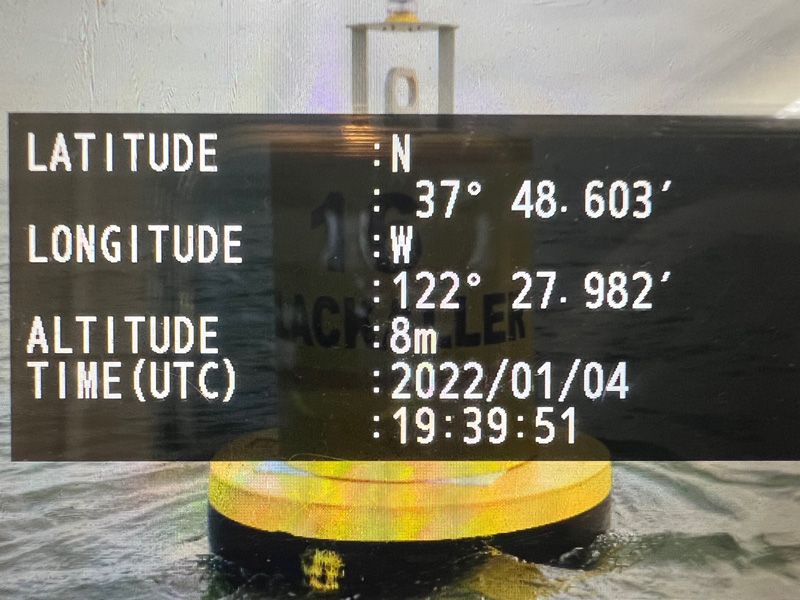
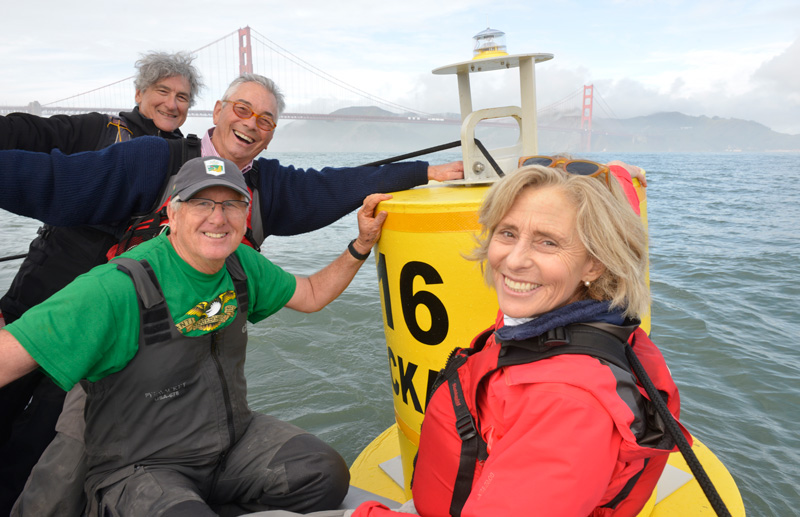
Skippers Wanted: US Coast Guard-Licensed Captains for Charters and Private Lessons
Wanted: US Coast Guard-licensed captains for charters and private lessons. For power & sail. Hourly rate from $50 up. Weekend and weekday work available.
1160 Brickyard Cove Road, Suite 21, Richmond, California 94801 • (510) 236-2633 • [email protected]
Rolex Big Boat Series Embraces ORC Rating Rule
On September 15, 2022, when handicap fleets line up to compete in the Rolex Big Boat Series, they will be racing under rating rules established by the Offshore Racing Congress (ORC) rather than the Offshore Rating Rule (ORR). The four-day regatta, hosted by St. Francis Yacht Club in San Francisco, has been racing under ORR since 2014. Now the handicap divisions will be split according to ORC rules. Boat owners will need to get ORC certificates.
StFYC will also employ the ORC rule when scoring other handicap regattas on its 2022 regatta schedule. These include the Stone Cup on May 21-22 and the Phyllis Kleinman Swiftsure Regatta on August 19-21. Many racers use the Swiftsure to tune up for RBBS.
For more than 50 years, the Offshore Racing Congress has developed and managed the IOR, IMS and now ORC rating systems used in inshore and offshore racing around the world. Globally, it is the most popular measurement-based handicap system. More than 10,000 certificates have been issued in 45 countries.
StFYC’s senior sailing director, Adam Corpuz-Lahne, sees two big benefits with ORC. “It’s transparent and it’s popular,” he said. “If our goal is to promote high-quality racing, we need to use the rule that attracts high-quality racing boats. Last year, the IC37 Flying Jenny came out from Annapolis. They won their division. We’d like to see more boats like that coming out here to compete. ORC seems to be the preferred rating rule internationally. It’s become very popular on the East Coast and Midwest as well. We hope that we start a trend on the West Coast and see other clubs and areas go to ORC.”
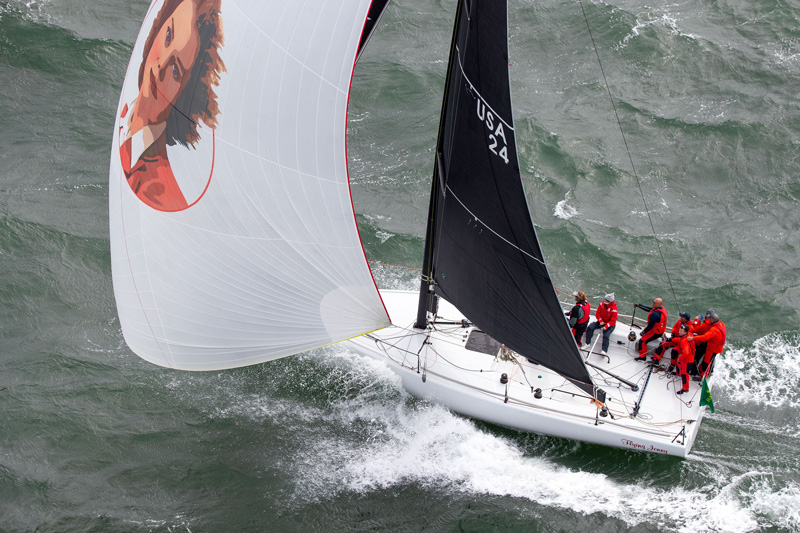
Learn More About ORC
StFYC will host an informational Q&A with Dobbs Davis and the ORC support team via Zoom on January 19 at 6 p.m. PST. All interested parties are invited to attend. Sign up here.
The club will publish the RBBS Notice of Race in February. Registration will open at that time for select one-design fleets, Classic boats with ORR-EZ certificates, and monohulls with current ORC certificates.
Clear the Decks, Batten the Hatches! Get Storm-Ready!
In the January issue of Latitude 38, Mary SwiftSwan, from Afterguard Sailing Academy in Oakland, wrote about the aftermath of the October 24 storm that was later identified as an “atmospheric river combined with a bomb cyclone.” Anyone who was in the Bay Area that day will remember the ferocious winds and lashing rains. Boat owners and marina crews were on high alert, many trying to save boats, others realizing a vessel was lost.
Mary talks about the various vessels that were damaged or lost, including one from her own fleet, the Ericson 34 Anthem, which, sadly, ended up at the Army Corps scrap yard. She then discusses the options that were, or were not, open to Anthem‘s captain on that memorable day. You can read all the details in the January issue here.
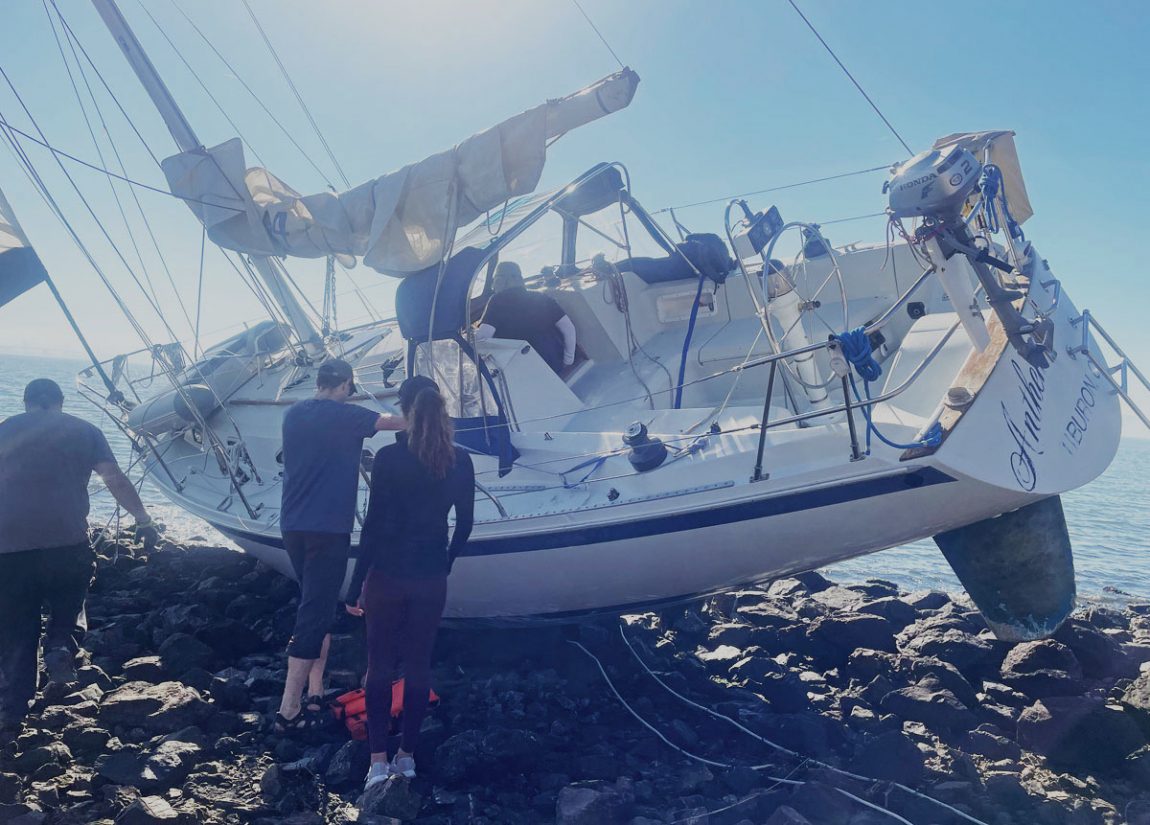
Further, to help other boat owners protect their vessels, Mary followed up with a checklist of precautions that we can all take to ensure our boats have the best possible chance of surviving extreme storms, such as the October “bomb cyclone.”
Storm Prep Checklist:
- Clean the cockpit scuppers – first, by hand, remove any leaves, food, hair, lint/cloth, etc. near or on the scupper grate. Use a hose against the scupper drains to fully clear them. Sweep the cockpit of all debris that could get into the scuppers.
- Clear the deck of chairs and cushions. Put any loose gear below or take off the boat. If you have a SUP or other boat toys tied to lifelines or the deck, remove to below or off the boat.
- If you have a dinghy, secure upside down on the foredeck if possible. If it’s on strong davits, make sure to lift the bow higher than the stern. Pull the drain plug and put it in the navigation table. Cover if possible. In addition use fore and aft spring lines to secure so it does not sway on the davits. If you have an outboard on a mount, put it in a lazarette or below, or remove from the boat.
- Remove or secure in their lockers batteries, jerry cans of fuel, engine fluids.
- Secure cabinet doors and drawers and cabin doors below to keep items from becoming flying objects.
- Close the head thru-hull. Close all but the engine intake thru-hulls. If a powerboat, check with your mechanic about a duck valve option for exhaust exits in the hull to prevent water intrusion if the boat is heeled hard by the winds.
- Clean the bilge in case any oil is in the bilge when it is pumped overboard. Fines start at $25,000 to $75,000. Make sure the bilge pick-up hose protective grate is clean and clear. Run clean water through the bilge pump system to make sure it is working.
- Wipe the area under the engine clean of oil. Place a white oil absorbent pad to be able to see if any oil or other engine fluid leaks.
- Run the engine and turn on the electronics to charge up the batteries and expel moisture from the wiring for 20-40 minutes monthly. Best to run in gear when operating for more than 10 minutes. Ensure your dock lines are well set before putting into gear.
- If you have a high-windage power or houseboat, with freely set furnishings, secure all in place. Wind heeling the boat causing furniture movement is a common cause of tall-boat capsize.
Electrical:
- Test the batteries. If you have a battery charger set it on auto. Shorepower? Connect it.
- From the dock box, take the electrical cord aboard at the closest place to the dock box. Run it along the deck, securing along the way if needed. Important to keep the cord out of the water to reduce electrolysis corrosion. Set it up so there is some flexibility for wind and current.
- Check that the electrical cable has a working black secure ring on both ends. Secure to the dock and to the boat.
- Turn on the boat AC panel and battery charger. The battery charger keeps the bilge pumps working. Important all the time, but KEY in a storm. Test the auto bilge pump lift switch, making sure it works. Turn the switch to ON at the dock box. Test an AC item on the boat to ensure it’s on.
- Turn off all instruments. Turn off lights, refrigerator and all systems. The bilge pump should be direct to battery wiring with an auto setting. The main battery selector should be set to off.
Sails:
- Get all sails off the deck if not under proper and secured sail cover canvas or rolled up. Put sails in a cockpit locker or below in the head where they get some air circulation. They can hold moisture, so putting them on interior cushions can cause both to mildew. Upright in their bags on the cabin sole is better than lying flat on cushions, if you do not have a better place to stow them.
- Roller-furler sails are easy for storms to destroy. Protect when rolling up with three wraps of the jib sheets around the middle of the sail for headsail(s). Then secure the jib sheets with tension from winches to cleats in the cockpit. The lines then become an extra secured safety line if you have to go forward of the cabin in a winter storm or at night.
Hull Protection:
- Hang fenders on either side of, but near, the beam, not midships. A fender can pop if pressed by the beam in a storm, possibly damaging both hull and fender. Use a lark’s head hitch on a lifeline or round turn and two half hitches on a shroud or stanchion. The often-used clove hitch litters the waterways with fenders. A clove hitch is defined as a ‘temporary knot’.
- Set bow and stern dock lines securely with clean ‘cleat hitches’ vs lines loosely figure-eight’ed around the cleat, unless boat weight is greater than 40,000 lbs. There are three ways to cleat depending on the weight of the boat. Use the one best for your boat.
- Set fore and aft spring lines to minimize boat movement. Yes, on 22- to 25-ft boats too. After securing the lines, ensure the boat takes tension on two lines at a time on the same side: dock and spring, two springs, or two dock lines.
- Do not over-tension the tie-down lines. A heavy boat can damage the dock or snap lines if pulled too tight. Let the boat float, but in the place you want it to stay. Where appropriate, for bow and stern lines, use snubbers to allow boat movement without snapping lines. Take a look at Pier 39.
- When ready to leave the boat, use the windward dock lines to position the boat toward the middle of the slip, a minimum of four inches away from the leeward fenders. Outside-tie vessels, check with the harbor about breast line anchors or moorings to reduce pressure on the hull and docks. If used, consider a bow/stern bridle to evenly pull the boat off her fenders a few inches.
Docks:
- Remove anything from around the boat on the dock. Again chairs, plants, dock steps, boat brush and other equipment that is handy to leave out in the prime sailing season becomes a hazard to all boaters if gets into the waterway.
- Items not nailed to the dock before a storm should go into the dock box or put below.
- Secure the top of the dock box so it can’t be blown up and into the boat.
At Anchor:
- Two anchors at 45 degrees are a better holding option than one anchor for offshore or in a storm. A single anchor is very much at risk in a storm. Anchors twist out of their holding when the tides change. Through slack water they work loose, then reset when pulled in the new direction. With two anchors at 45 degrees, one is always holding. If tucked into a protected corner for hurricane winds, add a third off the stern to remain facing the direction best to survive wild storm winds.
- Mantus or Rocna are the only anchors with roll bars to stay attached to the ground, but two at 45 still works best. Bruce and Fortress anchors have amazing holding power in S.F. Bay.
- Service the chain if on a hook for the winter months or you anchor out on a regular basis.
- Ensure seizing wire or plastic wire ties are in good order for shackles in the ground tackle.
———————————————
In case you ever forget which ‘Lectronic story you found this list in, just go to www.latitude38.com/resources. Here you’ll find the Boat Check List, and lots of other useful information for sailors.

